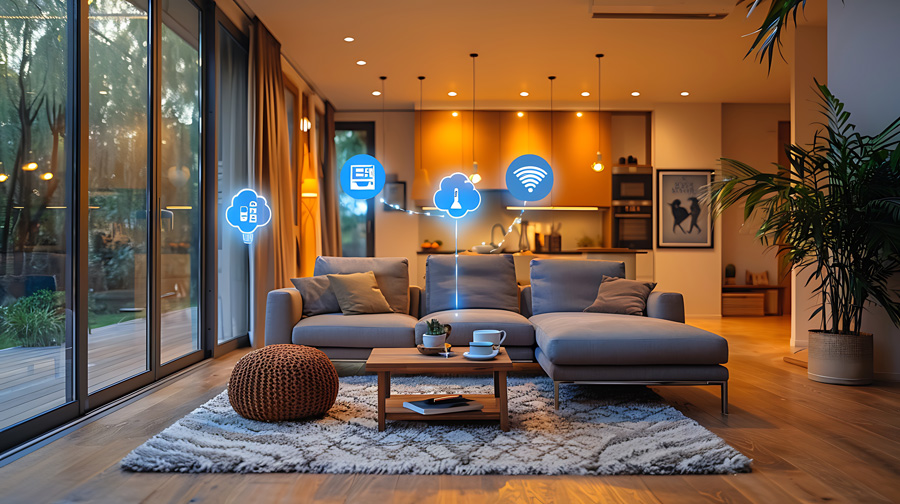In today’s fast-paced world, the concept of a smart home has become increasingly popular. But what exactly is a home automation protocol? Understanding this term is crucial for anyone looking to enhance their living space with modern technology. A home automation protocol is essentially a set of rules or standards that allow devices within a smart home to communicate with each other. This communication is vital for creating a seamless and efficient environment where devices can operate in harmony.
For creative professionals, the idea of integrating technology into everyday life can be both exciting and daunting. However, by grasping the basics of home automation protocols, they can transform their living spaces into innovative hubs. Whether it’s controlling the lighting, temperature, or security systems, these protocols enable users to manage various aspects of their homes remotely and conveniently.

The Basics of Home Automation
At its core, home automation refers to the ability to control and automate various devices and systems within a home. This can include lighting, heating, ventilation, air conditioning, security systems, and even kitchen appliances. By using a centralized control system, homeowners can easily monitor and manage these devices, potentially saving time, energy, and money.
How Do Home Automation Protocols Work?
Home automation protocols function by allowing different devices to communicate with each other over a network. This communication can occur through wired or wireless means, depending on the specific protocol and devices involved. Common examples of these protocols include Zigbee, Z-Wave, and Bluetooth. Each has its unique features and benefits, making it essential to choose the right one for your home setup.
Zigbee vs. Z-Wave
When considering home automation protocols, two of the most popular options are Zigbee and Z-Wave. Both are wireless protocols that facilitate communication between smart devices, but they have distinct differences. Zigbee is known for its low power consumption and fast communication speed, making it ideal for battery-powered devices. On the other hand, Z-Wave offers a more extended range and is often considered more reliable, although it may consume more power.
Benefits of Home Automation Protocols
The primary advantage of using a home automation protocol is the ability to centralize control over various devices, enhancing overall convenience and efficiency. For instance, homeowners can set schedules for their lights and thermostats, ensuring that their homes are comfortable and energy-efficient without manual adjustments.
Security Enhancements
One significant benefit of home automation is improved security. With the right protocol, homeowners can integrate security cameras, motion sensors, and smart locks into their systems. This allows them to monitor their homes remotely and receive alerts in case of any suspicious activity.
For those interested in further enhancing their home’s security, consider checking out smart carbon monoxide detectors as an additional layer of protection.
Choosing the Right Protocol for Your Home
Selecting the appropriate home automation protocol depends on various factors, including the size of your home, the number of devices you plan to connect, and your specific needs. It’s essential to research and understand the pros and cons of each protocol to make an informed decision.
Wireless vs. Wired Protocols
When it comes to home automation, protocols can be divided into two main categories: wired and wireless. Wired protocols, such as KNX, offer stable connections and are suitable for new constructions. However, they can be challenging to install in existing homes. Wireless protocols, on the other hand, are easier to implement and more flexible, making them a popular choice for many homeowners.
For those looking to integrate smart home technology into their existing properties, explore some smart home options for second properties.
The Future of Home Automation Protocols
As technology continues to evolve, so do home automation protocols. The future holds exciting possibilities, with advancements in artificial intelligence and machine learning paving the way for more intuitive and responsive smart home systems. These developments promise to make homes even more efficient, secure, and user-friendly.
For more insights into the future of smart homes, you might find this article on smart home automation ideas insightful.
Integration with AI
The integration of AI in home automation is an exciting development that promises to enhance user experience significantly. With AI, smart homes can learn and adapt to user preferences, leading to even greater efficiency and customization.
If you’re curious about setting up routines and integrating AI with your smart devices, consider exploring how to set routines with Alexa.
Conclusion
In conclusion, understanding home automation protocols is crucial for anyone looking to create a smart, efficient, and secure living environment. By selecting the right protocol and integrating the latest technologies, homeowners can transform their spaces into modern marvels that enhance convenience and quality of life.

FAQs
What is a home automation protocol?
A home automation protocol is a set of rules that allow smart devices to communicate with each other, enabling centralized control and management.
Why are home automation protocols important?
These protocols are essential for ensuring that smart devices work together seamlessly, providing convenience, security, and energy efficiency.
What are some common home automation protocols?
Common protocols include Zigbee, Z-Wave, and Bluetooth, each offering unique features and benefits for smart home integration.






